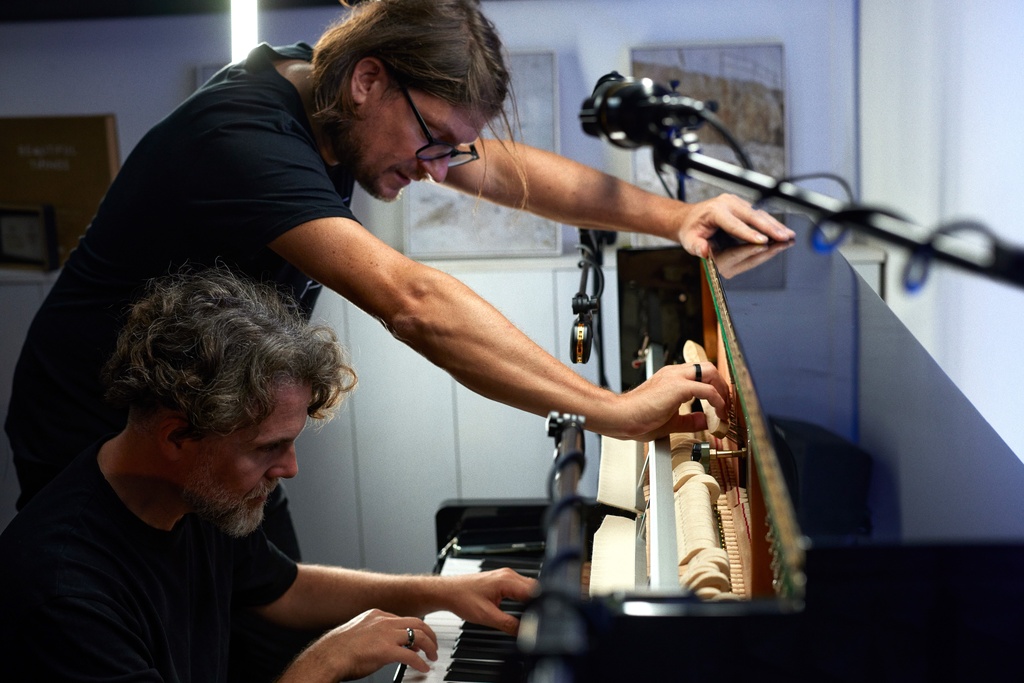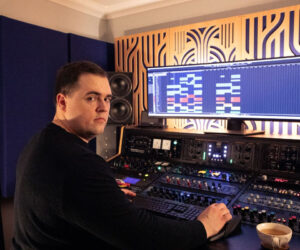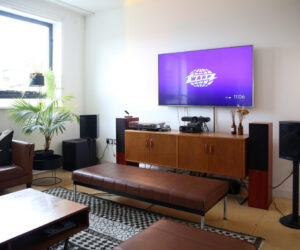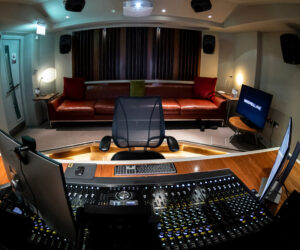Noted pianist and composer Andrea Manzoni joined forces with composer, producer and film director Giorgio Ferrero to craft “Self-Portrait,” a new musical landscape captured with AUDIX microphones at MYBOSSWAS Studio in Turin, Italy.
The project saw a novel approach in exploring the studio’s vertical piano. While capturing a stand-up piano is typically standard fare for most recordings, Manzoni and Ferrero had other plans. To realize their vision to capture the tones of the instrument, they relied the SCX25APS, SCX1, A231, PDX720, and ADX60 microphones.
Manzoni blurs the boundaries between jazz, electronic, film, pop, and classical music into a “crossover” style. He’s recorded and collaborated with artists as varied as Andrea Bocelli and Lawrence D. “Butch” Morris and venues such as Carnegie Hall in New York City and London’s Saint Martin in the Fields and on stages in Rome, Hong Kong, Milan and Tunis as well as broadcasts on Swiss Public Radio, France 2, Europe 1, and many others.
Ferrero runs the multidisciplinary creative studio MYBOSSWAS where “Self-Portrait” was recorded. He has composed soundtracks for dozens of films which premiered in major film festivals (Venice, Locarno, Tribeca, for example,) as well as theatrical performances including music for the works of Paolo Giordano, Daniele Gaglianone, David Lachapelle among others. In addition, he has created visual and sound art installations for MAXXI Museum, Bordeaux Biennal, Museo Nazionale del Cinema, and has worked commercially for publishers and brands like Condè Nast, Nike and Alfa Romeo.
While Manzone and Ferrero had known each other for many years, “Self-Portrait” marked their first collaboration. Manzoni’s modern composition called for the piano to played, scraped, and struck in unconventional ways, with Ferrero stating, “We played and tortured the studio’s piano in a way that only we could do… because it’s my studio and it’s my piano.”
The reproduction provided by the AUDIX microphones were then fed through vintage processing gear and Ferrero’s digital audio workstation where he filtered, looped, and manipulated the performance in real-time to create the finished product. “The AUDIX microphones were more than essential in translating the layers of sounds and music inherent in the composition,” he says. “They enabled us to discover details that we didn’t know we’d find. It’s almost as if they were additional performers on the piece.”
A matched pair of SCX25A large condenser microphones designed for piano miking were placed next to the piano’s felts, a key position for shaping the work’s sound, but the remaining microphones could be creatively placed and led to the unique nature of the recording. In addition, A231 large-diaphragm condenser vocal microphones, positioned up high and processed through boutique tube gear, were employ to impart a “retro/lo-fi” vibe.
Meanwhile, a PDX720 dynamic studio microphone lay near Manzoni’s feet,and played an impoartant role in capturing the percussive side of the composition, from foot taps and stomps to depressions of the piano’s pedals. And, a ADX60 boundary condenser served as a “jack-of-all-trades” while a pair of SCX1 studio condens placed in an adjacent room provided an ethereal ambient sound that emanated from the performance.
Ferrero points to the SCX25, stating, “With very little processing the microphone produced the exact main sound we wanted for this piece. Conversely, the PDX720 was a departure from the usual dynamics, providing a fresh take to the percussive, punchy side of our work — an excellent tool indeed. A231s and ADX60 also provided fine sources for manipulation and processing, with the latter being a pleasure for its size and sound, as it was easily positionable with minimal fuss.”
Go here to listen to Self-Portrait and find out more.




















